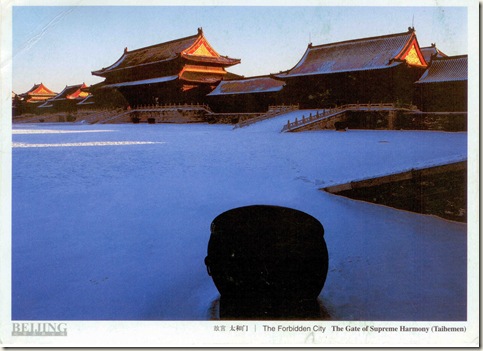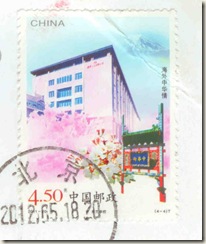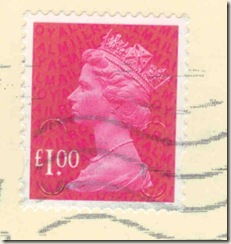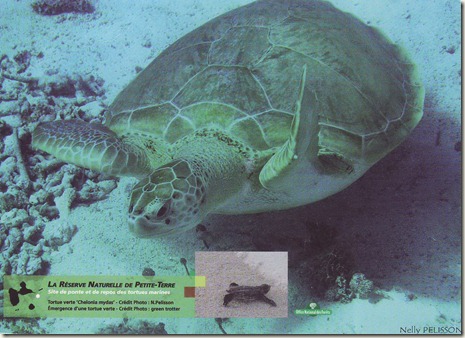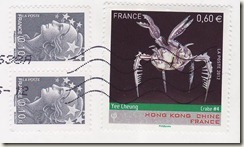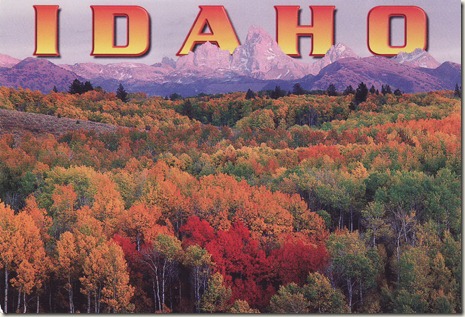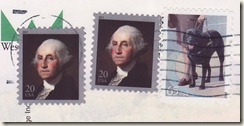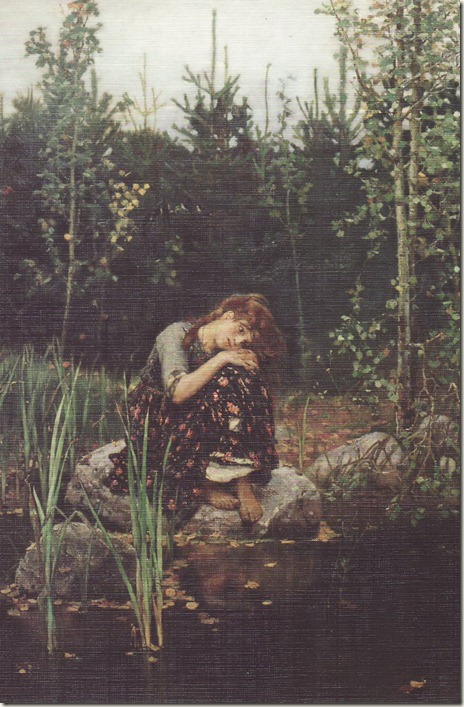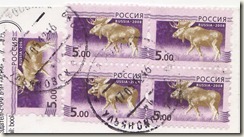CN-613898 463 - ая открытка
Country: China
Distance: 6,757 km
Travel time: 21 days
On postcard: Gate of Supreme Harmony, The Forbidden City
The Gate of Supreme Harmony (simplified Chinese: 太和门; traditional Chinese: 太和門; pinyin: Tàihémén; Manchu: Amba hūwaliyambure duka), is the second major gate at the southern side of the Forbidden City.
The gate was originally built during the Ming Dynasty, when it was called Fengtianmen (奉天門). Following the Qing conquest of China, the gate was given its present Chinese and Manchu name.
It is flanked by two minor gates, Zhendu Gate to the west and Zhaode Gate to the east. This gate and the Meridian Gate form the north and south boundaries of a great plaza (Shi Zi) that is divided by a serpentine waterway spanned by the "Golden River Bridges". On the north side of the gate is Harmony Square and the entrance to the grand Hall of Supreme Harmony.
Arrayed around the stairs are a large number of incense burners.
The central stairway was reserved exclusively for the Emperor and his immediate attendants, as was the central entrance of Meridian Gate.
US-1678333 461 - ая открытка
Country: USA
Distance: 8,295 km
Travel time: 19 days
On postcard: Teton Range
The Teton Range is a mountain range of the Rocky Mountains in North America. A north-south range, it is on the Wyoming side of the state's border with Idaho, just south of Yellowstone National Park. Most of the range is in Grand Teton National Park.
Early French Voyageurs used the name "les Trois Tétons" (the three breasts). It is likely that the Shoshone people once called the whole range Teewinot, meaning "many pinnacles".
The principal summits of the central massif, sometimes referred to as the Cathedral Group, are Grand Teton (13,770 feet (4,200 m)), Mount Owen (12,928 feet (3,940 m)), Teewinot (12,325 feet (3,757 m)), Middle Teton (12,804 feet (3,903 m)) and South Teton (12,514 feet (3,814 m)). Other peaks in the range include Mount Moran (12,605 feet (3,842 m)), Mount Wister (11,490 feet (3,500 m)), Buck Mountain (11,938 feet (3,639 m)) and Static Peak (11,303 feet (3,445 m)).
Geology
Between six and nine million years ago, stretching and thinning of the Earth's crust caused movement along the Teton fault. The west block along the fault line was pushed upwards to form the Teton Range, thereby creating the youngest range of the Rocky Mountains. The fault's east block fell downwards to form the valley called Jackson Hole. While many of the central peaks of the range are composed of granite, the geological processes that led to the current composition began about 2.5 billion years ago. At that time, sand and volcanic debris settled into an ancient ocean. Additional sediment was deposited for several million years and eventually heat and pressure metamorphosed the sediment into gneiss, which comprises the major mass of the range. Subsequently, magma was forced up through the cracks and weaknesses in the gneiss to form granite, anywhere from inches to hundreds of feet thick. This ancient magma has manifested itself as noticeable black dikes of diabase rock, visible on the southwest face of Mount Moran and on the Grand Teton. Erosion and uplift have exposed the granite now visible today.
One reason the Tetons are famous is because of their great elevation above their base. Unlike most mountain ranges, the Tetons lack foothills, or lower peaks which can obscure the view. This is due to the fault zone being at the base of the range on the eastern side, and the range being too young to have had time to erode into soft hills. As such, the Tetons rise sharply, from 5,000 to nearly 7,000 feet above the valley floor. The view is most dramatic as seen from the east; on the west side, they appear as high rolling hills that transition smoothly into flat pasture.
Jackson Hole and the Tetons have been the setting for a number of films, including John Wayne's movie acting debut in The Big Trail in 1930 and Shane in 1953. Mount Moran and the surrounding mountains were used as a backdrop for the lake/swamp setting in the original series of Land of the Lost (1974 TV series).
RU-937614 460 - ая открытка
Country: Russia
Distance: 1,739 km
Travel time: 33 days
On postcard: Victor Vasnetsov, Alyonushka. 1881


